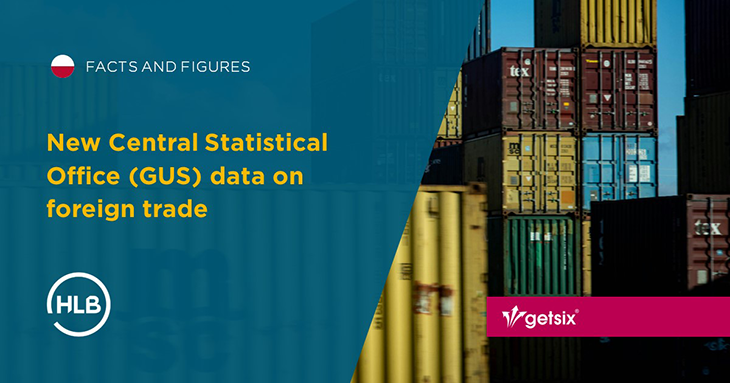New Central Statistical Office (GUS) data on foreign trade
New data on exports and imports for the period from January to November 2023 have been published on the website of the Polish Central Statistical Office.
From January to September 2023, merchandise turnover in foreign trade reached PLN 1,204.2 billion in exports and PLN 1,160.5 billion in imports in current prices. The positive balance amounted to PLN 43.8 billion, a significant improvement compared to the result of minus PLN 70.5 billion in the corresponding period in 2022. Exports increased by 1.7%, while imports decreased by 7.5% compared to the previous period.
Poland’s largest share in total exports is with developed countries, reaching 86.7% (herein 74.9% with the EU). In imports from developed countries, the share is 65.7% (herein 53.9% with the EU).
Germany remains a strong business partner for Poland
Germany’s share in the country’s exports increased by 0.2 percentage points compared to the same period last year, reaching 28.0%.
Despite a 0.5 percentage point decrease, Germany’s share in imports remains high at 20%. From January to November, the value of imports from Germany amounted to EUR 50.4 billion.
The positive trade balance amounted to PLN 106.1 billion compared to PLN 72.0 billion in the corresponding period in 2022.
Export and Import Structure
In exports, a significant increase was observed in the sectors of beverages and tobacco (21.0%), machinery and transport equipment (10.4%), food and live cattle (8.6%), and various industrial products (1.4%). During this period, decreases were recorded in unclassified goods (36.7%), mineral fuels, lubricants, and related materials (17.0%), inedible raw materials (15.6%), industrial goods classified mainly by material (8.3%), chemicals and related products (7.1%), and animal and vegetable oils, fats, and waxes (5.6%).
In imports, the highest growth was noted in beverages and tobacco (18.5%), food and live cattle (7.9%), and machinery and transport equipment (4.5%). The main declines were noticed in unclassified goods (60.9%), animal and vegetable oils, fats, and waxes (27.9%), inedible raw materials (18.5%), industrial goods classified mainly by material (17.5%), chemicals and related products (9.4%), various industrial products (7.8%), and mineral fuels, lubricants, and related materials (5.9%).
If you have any questions regarding this topic or if you are in need for any additional information – please do not hesitate to contact us:
CUSTOMER RELATIONSHIPS DEPARTMENT

ELŻBIETA
NARON-GROCHALSKA
Head of Customer Relationships
Department / Senior Manager
getsix® Group
***













